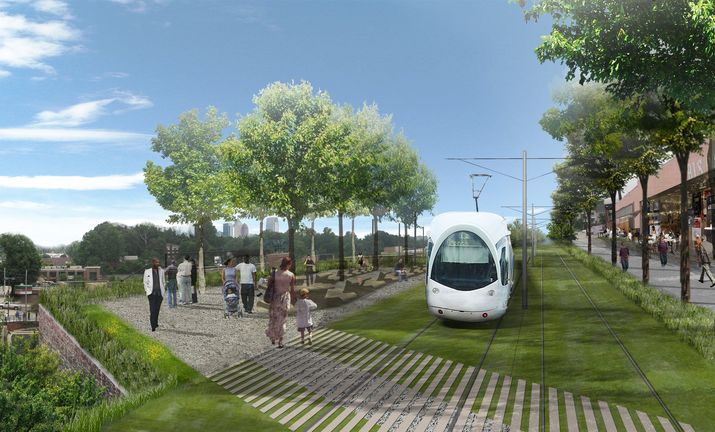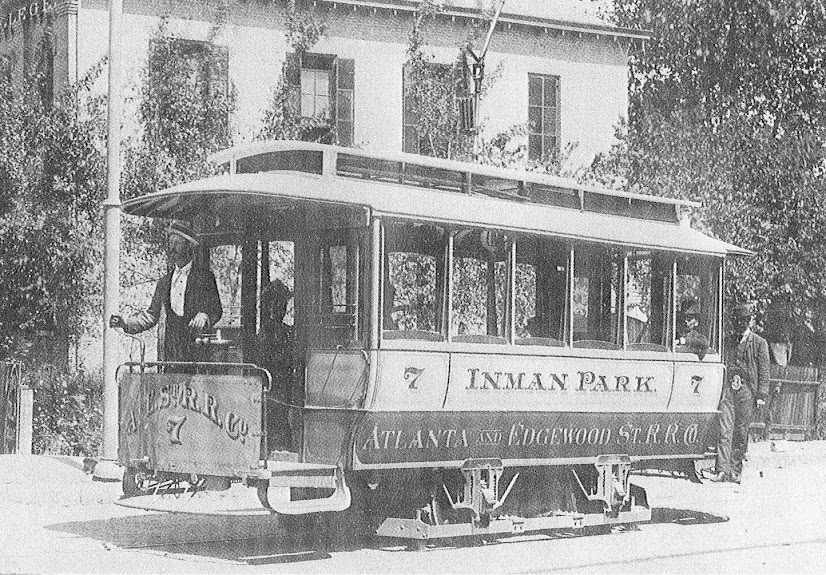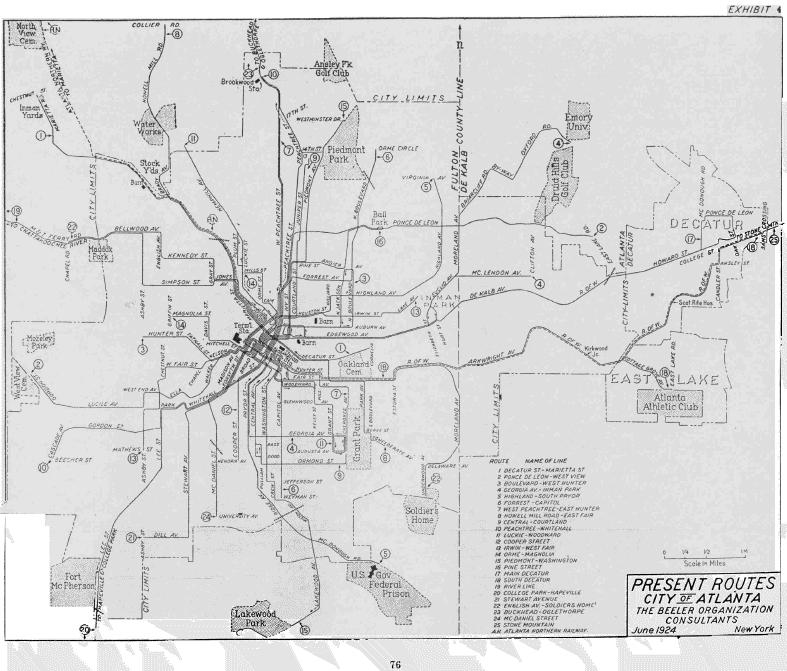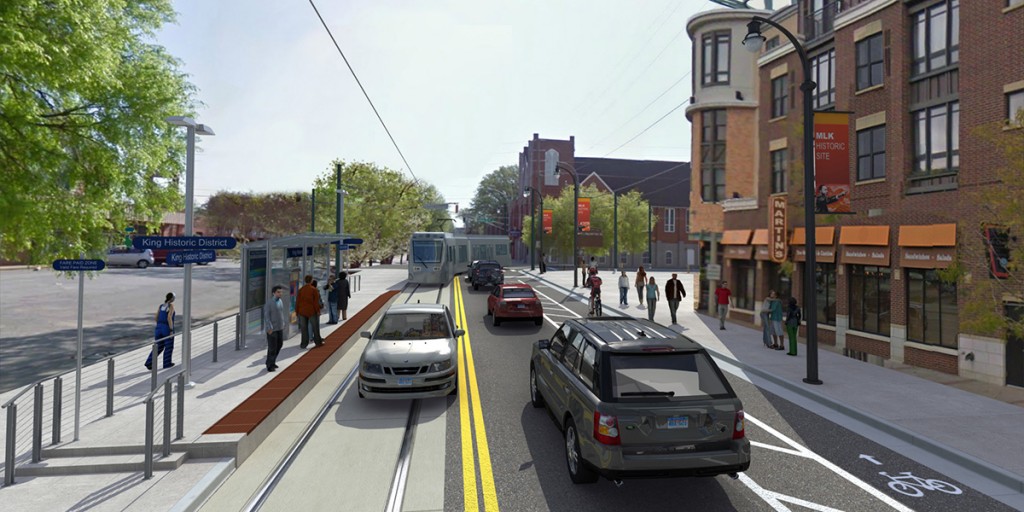Atlanta’s very first electric streetcar was an entirely private venture.
Joel Hurt owned some dirt outside the city that he developed into Inman Park, Atlanta’s first planned subdivision. In 1886 Hurt connected Inman Park to his Equitable Building, Atlanta’s first downtown skyscraper, with a streetcar that ran east and west on Edgewood Avenue. The Atlanta and Edgewood Street Railway Company would claim yet another first as America’s first profitable streetcar line.
The era of the electric streetcar would eventually run it’s course in Atlanta, with the last streetcar ending service on April 10th, 1949. This map gives you an idea of how extensive the system was, back in the day:
Electric streetcars will once again glide along Edgewood Avenue, beginning in the Spring of 2014. From Edgewood, the new streetcars will do a 2.6 mile loop from the Martin Luther King, Jr. National Park and back to Centennial Park via Auburn Avenue.
This system is, of course, a public investment funded by a combination of Federal and City dollars.
The vision for the return of streetcars to Atlanta doesn’t stop with a downtown loop, though. The fully realized BeltLine plan will feature a 22 mile loop of streetcar railway. The recently released strategic implementation plan for the BeltLine comes with a $4.4 billion price tag for the linear greenway of trail, transit, and parks. Half of that cost would go to the transit component with a final delivery of 2030.
With P3, streetcars could come to the BeltLine much sooner than originally planned.
To compress this time frame, the city is considering implementing a public-private partnership (P3), a strategy that would harken back to the days of Joel Hurt. A P3 could see streetcars encircling the city within the decade, reducing the construction time from 17 to 5 years. It would be the first time a public-private partnership was used to fund Georgia transit in the modern era, although they are common in Europe and Asia.
Mayor Kasim Reed and other city officials intend to leverage the early success of the BeltLine to attract private investment. The first segments of the BeltLine, which only have the trail component, have shown a return on investment of $3 to every $1 invested. ROI for other streetcar developments around the country have shown an even better ratio, a return that has surely not gone unnoticed by large investment firms.
The BeltLine has always been a P3 in principle. A total of over $1 billion has been invested within the BeltLine TAD, a special tax allocation district. This has created the increase in property taxes that the city is using to pay for further expansion of the public amenities that make up the BeltLine.
Mayor Reed says he will take the next few months to get the public onboard with a P3 strategy to fast track streetcars on the BeltLine. He recently said:
We’re going to have a public private partnership….I believe that is the right way to go because I’d like to ride the light rail while I’m still alive.
Amen, Brother! I heard that with my bad ear…










 ©2021 BeltLandia. All information provided is deemed reliable but is not guaranteed and should be independently verified. Properties subject to prior sale or rental.
©2021 BeltLandia. All information provided is deemed reliable but is not guaranteed and should be independently verified. Properties subject to prior sale or rental.
Speak Your Mind